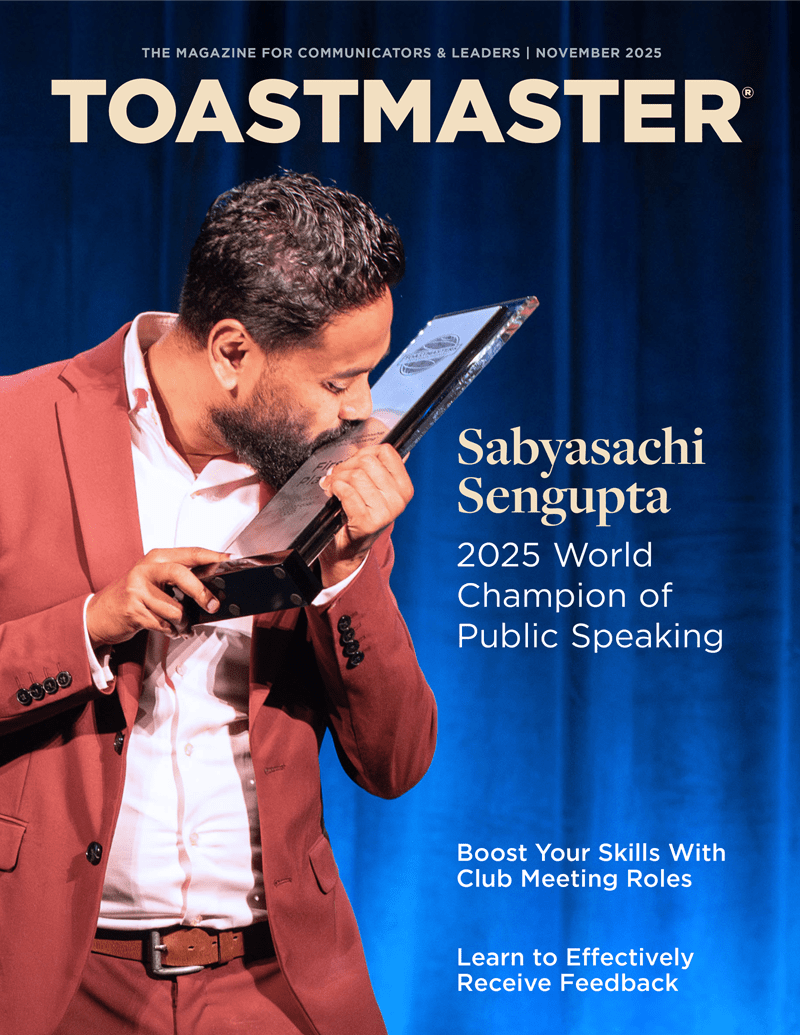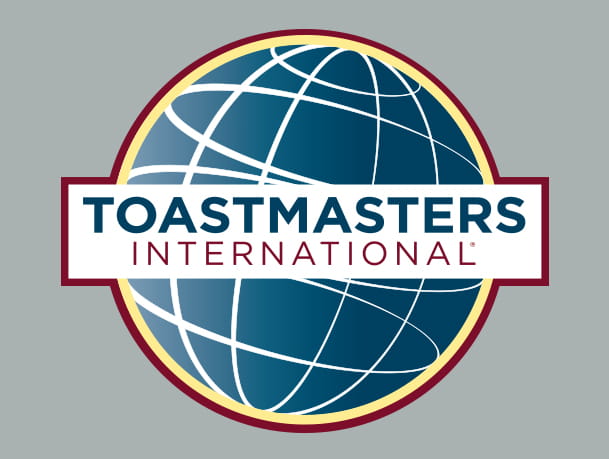
Have you ever wanted to score a new client, sign up a new Toastmaster, or just convince your cat to stop sitting on your keyboard during Zoom calls? I can’t help with the cat—we all know cats don’t negotiate. But luckily, people are more persuadable.
There are powerful persuasion techniques that can help you gain new clients or new club members. But first, let’s address the elephant in the room. Is persuasion manipulative?
Persuasion vs. Manipulation
At its core, persuasion is about guiding others toward a decision using honesty and the idea of mutual benefits, while manipulation relies on deception or exploitation for self-serving gain. For example, imagine talking with a guest at a club meeting. A persuasive approach might involve explaining how Toastmasters can help improve the person’s confidence and communication skills, aligning with their personal goals.
A manipulative approach, on the other hand, might involve saying, “If you don’t join today, you’ll miss out on a life-changing opportunity forever,” creating unnecessary pressure.
By applying persuasion ethically, you can build trust while motivating meaningful action.
The Seven Principles of Persuasion
To apply persuasion effectively, it helps to understand the core principles behind it. Robert Cialdini, in his 1984 book Influence: The Psychology of Persuasion, identifies seven key principles:
Liking:
People prefer to say yes to those they like.Social proof:
People are influenced by others’ opinions.Authority:
People respect experts and those in authority.Reciprocity:
People are more likely to give back when they’ve received something first.Scarcity:
People fear loss and desire what’s limited.Commitment and consistency:
People like to stay consistent with their commitments, even small ones.Unity:
People are motivated by shared identities and values.
The first three principles—liking, social proof, and authority—help establish trust and credibility. This article will focus on the last four: reciprocity, scarcity, commitment and consistency, and unity. These principles are designed to inspire action—the ultimate goal when persuading prospects to become members or clients.
Reciprocity: Give a Little, Get a Lot
Reciprocity is the idea that people feel a natural urge to give back when you give them something valuable. Here’s a story to illustrate.
On a trip to Ocho Rios, Jamaica, my husband and I were searching for hearing aid batteries. A local man, Dino, noticed we appeared lost, approached us, and went beyond giving directions—he walked us to the store, gave me a flower for my hair, and offered an impromptu tour. Dino’s generosity inspired us to reciprocate, and as we left him, we gladly handed over a $50 tip.
In my coaching business, I apply reciprocity by offering free consultations with actionable advice that prospects can use immediately. For organizations like Toastmasters, inviting prospects to a free meeting, offering a personal testimonial, or buying them a cup of coffee can all build goodwill and inspire action.
Takeaway:
Reciprocity builds goodwill. Start the cycle by giving value first.Commitment and Consistency: Small Yeses Lead to Big Results
This principle hinges on the idea that people prefer to stay consistent with their commitments. Even small steps can pave the way for bigger actions.
Have you ever signed up for a free trial of a streaming service to watch one show? Fast-forward six months and you’re still subscribed. Or maybe you attended a club meeting and took on a small role, like timer. Before long, you were saying “yes” to larger roles—from club officer to District Director.
In my coaching business, I use the phrase “Based on what you told me ...” to align solutions with client goals. For Toastmasters, asking a prospect why they came to the meeting, and showing how membership is consistent with their goals, can spark that first “yes.” Even something as simple as participating in Table Topics® can build momentum toward membership.
Eleos Theofilus Gandawidjaja, a member of World Travelers Toastmasters Club in Singapore, shared an example of this concept in action. He encouraged a club guest, Lisa, to try Table Topics, reassuring her it was a low-pressure way to get involved. Lisa agreed and told a story about overcoming a tough personal challenge.
“The room lit up with applause and encouragement,” recalled Gandawidjaja, “and I could see her confidence grow in real-time.” After the meeting, he told her, “Lisa, that was a fantastic story! You’ve already got the natural storytelling skills we love here. Why not stick around and keep building on that with us?” That moment of encouragement and small commitment sealed the deal—Lisa joined the very next day.
Takeaway:
Use small actions to build commitment over time.Scarcity: Nothing Sparks Action Like the Fear of Missing Out
Scarcity creates urgency by highlighting limited availability or time-sensitive opportunities. Here’s an example.
When my family was house-hunting, we found a perfect home. Our initial offer was accepted—until the Realtor called to say there was a higher offer. The seller gave us a chance to match the higher offer within hours. That scarcity—the fear of losing the house—motivated us to act quickly.
While I don’t often use scarcity in my coaching business, I occasionally mention limited coaching availability during busy times. For organizations, emphasizing limited-time incentives or exclusive opportunities can motivate prospects to act.
Another way to leverage scarcity is the “Why delay transformation?” approach. Instead of focusing on external limitations, this method encourages prospects to recognize the cost of waiting. You can use phrases such as, “The sooner you join, the sooner you’ll start seeing results,” or “Imagine where you could be in a couple of months if you start now.” This creates internal urgency by highlighting the benefits of immediate action rather than focusing solely on what might be lost.
Takeaway:
Use time or quantity limits to create urgency, or frame action as an opportunity for transformation.Unity: Belonging Inspires Belief
Unity is about fostering a sense of shared identity and values. When people feel they belong, they’re more likely to take action.
When I joined Toastmasters, I discovered it wasn’t just about improving my speaking skills—it was about being part of a group that genuinely wanted to help each other succeed. That sense of belonging kept me coming back.
You can foster unity with prospects by using a three-step format.
-
Ask a question:
What’s driving you to pursue [the goal] right now? -
Acknowledge unity:
I love that you’re focused on [the goal]. That’s something I care about, too. -
Position yourself as a partner:
We’ll work together to make sure your goals become a reality.
Bob Palmer, DTM, a member of the online Prime Time Toastmasters club based in Riverside, California, strengthens Toastmasters unity through follow-up communication. At each club meeting, he captures a screenshot of the Zoom session, highlights participants’ names (including guests), and promptly emails it to the visitors with a warm “Come back soon” message. This simple gesture makes guests feel seen and welcomed, reinforcing their connection to the club.
Takeaway:
Build a sense of shared purpose to inspire belonging and action.Applying Principles of Persuasion
Let’s recap how these principles can work for you.
Reciprocity:
Give value upfront to build goodwill.Commitment and consistency:
Use small “yes” moments to build momentum.Scarcity:
Highlight urgency to prompt immediate action.Unity:
Create belonging through shared values and purpose.
These principles aren’t just theories—they tap into human nature. By applying them, you can convert prospects into clients or members—or persuade people about other issues that you care about—more effectively.
So here’s your challenge: Choose one principle to apply this week in your club or business. Whether it’s offering a free resource, asking for a small commitment, or creating a sense of belonging, you’ll see the power of persuasion in action.
And who knows? You might even persuade your cat to cooperate—because, hey, you’re persuasive now!
Diane Windingland, DTM is a presentation coach from Spring, Texas, and a member of three clubs: Frankly Speaking Toastmasters in Spring, Texas, and PowerTalk Toastmasters and Readership Toastmasters, both in Minnesota. Learn more at virtualspeechcoach.com.



 Previous
Previous

 Persuasion and Pathways
Persuasion and Pathways
 Previous Article
Previous Article


